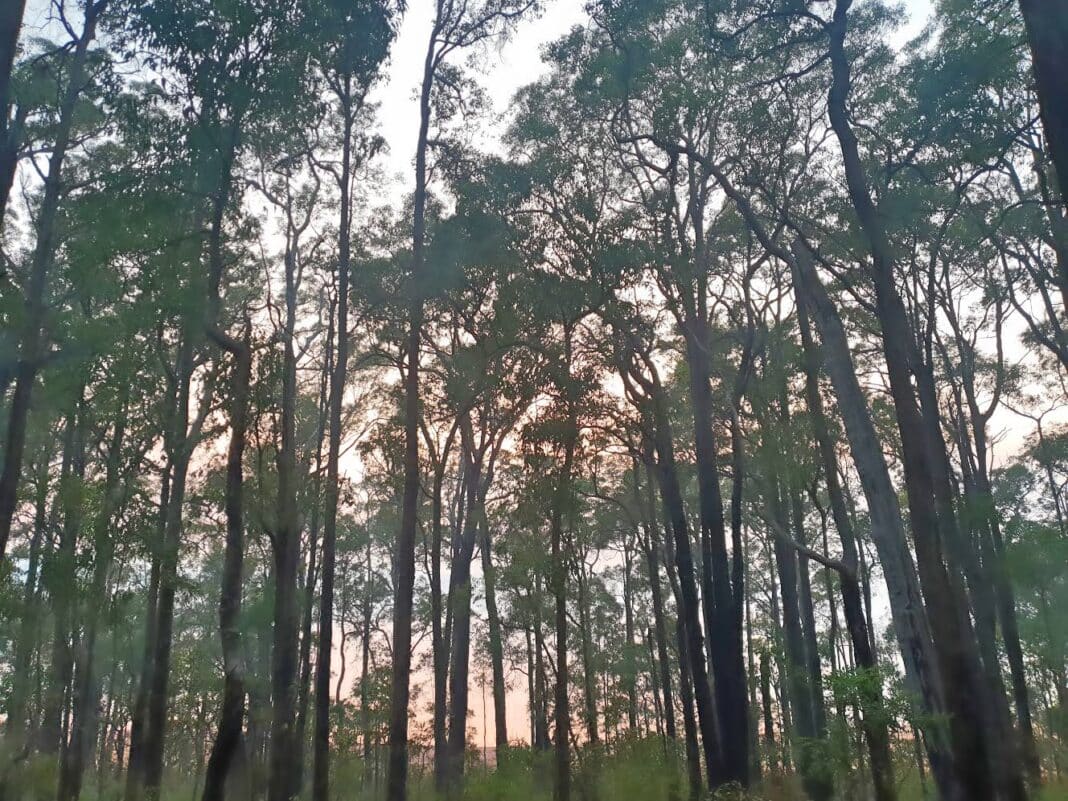- Exclusive: This is part 1 of a series by GAVIN BUTCHER, a former director at the WA Forest Products Commission.
“Just ‘ecological thinning’ for forest health” … that’s the new mantra for the south-west forests of Western Australia since harvesting ended.
The Forestry Minister Jackie Jarvis bleats this response to every question, no matter how irrelevant. And it is fair to say forest health should be a priority.
Trees and forests have been highly stressed during the current dry and scorchingly hot conditions throughout the 2023-24 spring, summer, and autumn.
You don’t have to look beyond the streets of Perth, lined with dead and dying mature trees, mostly Queensland brush box (Lophostemon confertus), confirming that the climate is becoming increasingly harsh.
Ecological thinning is meant to help forests cope with a drier climate by reducing the number of trees in regrowth stands. Some of the trees are felled to leave more water for those remaining, and some are even allowed to flow into the streams and creeks, which have been reduced to parched gullies.
A massive thinning program is needed to have any meaningful effect on the water balance. But doing this work isn’t cheap. The government has had to pay nearly $200 million for the first four years of a 146,000 hectare forested area needing treatment. As none of the studies has been published and no cost-benefit analysis has been done, it is not known what the total cost will be. Even so, the government’s’s commitment to our forests is welcomed.
However, studies into forest risk have been completed. A Conservation and Parks Commission report in 2022 indicated that the northeastern Jarrah and Wandoo forests were already exhibiting severe symptoms of climate-induced damage, whereas they found no overall decline in the southern forests, including the Karri forest.
The response of forests to thinning was intensively studied in WA long before the current “ecological thinning” idea was marketed. These studies have shown that forests must be thinned heavily and extensively to remove a large portion of the trees to achieve a sustained response.
An ABC news item (20/3/2024) on the Glen Mervyn Dam illustrates the scale of our problem. The dam has dried up due to lack of streamflow from surrounding jarrah forests.
The government’s new ecological thinning plan was released earlier this month, and thinning has already commenced. Also, note that the requirement for public consultation on these plans has been dropped.
The thinning plan confirms that the government’s mantra parroted by the Minister cannot be believed:
- The thinning plan is dominated by areas in the southern forest, particularly karri areas. The plan bears no correlation to forest damage measured by the Conservation and Parks Commission. There is only one small area in the high-risk area of northeastern Jarrah and Wandoo forests.
- Thinning has commenced in the karri forest, a lower ecological priority according to the government’s independent silvicultural panel.
- Thinning has commenced in an area that has previously been thinned. It is hard to fathom how such thinning could be considered an ecological priority when an earlier thinning already protected it.
- Thinning has started without a published prescription.
- Logs from the first thinning areas will supply veneer logs to replace the log supply affected by the moratorium on harvesting the Gnangara pines. These arrangements seem to have been expedited while other timber processors have been languishing without any prospect of log supply for months.
Ecological thinning has gotten off to a bumpy start, and the minister has been strangely quiet about beating up the government’s signature forestry initiative. There was no announcement or photo opportunity to boast of this achievement; it was just a silent and stealthy beginning.
There is good reason to remain quiet. Not only is the program not addressing ecological priorities, but it is also being driven by the need for timber supply—exactly the opposite of the minister’s mantra. It sounds like the script from Animal Farm, when, if you recall, the cry of “four legs good, two legs bad” transformed into “four legs good, two legs better.” Perhaps we will soon hear “ecological thinning for forest health and economic prosperity.”
My colleagues in the timber industry have sought not to highlight the disconnect between the minister’s rhetoric and reality … the thinning of the karri forest is a good forest industry outcome. However, by allowing incorrect statements to remain unchallenged, we are supporting the decay of science as a foundation of policy for short-term gain –allowing the bleating of false political spin to go unchallenged and some timber companies, to misquote George Orwell, “to be more equal than others”.
• Part 2 of the Great Ecological Thinning Lie in Wood Central will address the massive restrictions on private landholders thinning their forests.






